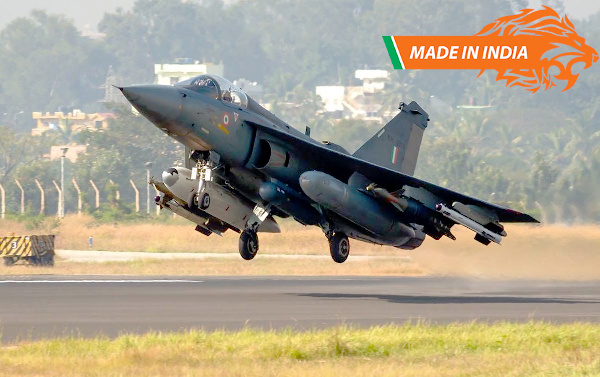Tejas, India’s indigenous supersonic Light Combat Aircraft (LCA), is all set to get one of the most potent and advanced targeting systems in the world with the Defence Research and Development Organisation (DRDO) successfully developing Laser Designator Pods (LDPs). The LDPs will exponentially increase the attack and fighting capabilities of the Tejas fighter, which has already joined the Indian Air Force (IAF), by turning it into an extremely formidable jet which can undertake day as well as night operations and in all weather conditions.
“Laser designator pod (LDP) is the laser sensor-cum-targeting system used in aircraft and provides inputs in actual flight conditions. These are advanced airborne infrared targeting and navigation pods to improve both day and night attack capabilities in all weather conditions. It performs tasks like detection, recognition, identification, designation of surface targets, accurate delivery of guided bombs and accurate ranging,” Sputniknews.com, a Russian news website, quoted an unidentified Indian official as saying.
Laser Designator Pods use a laser light source with pinpoint accuracy to designate a target which can then be destroyed using laser-guided bombs, missiles and high-calibre artillery munitions. According to the Sputniknews.com report, the LDP developed by India is extremely cost-effective, accurate and has successfully met all the parameters for an air-to-ground weapon in a flight simulator.
The report further states that Indian scientists P Suresh Kumar, NNSSRK Prasad and K Senthil Kumar were involved in developing and testing the LDP. The Indian LDP was able to achieve an average positioning accuracy in terms of azimuth and elevation computation for static and moving ground targets at +/- 2.3 metres.
India is already inducting the Damocles LDP equipped Rafale fighter jet, manufactured by France’s Dassault Aviation. The Damocles LDP have greatly enhanced the day and night laser designation capability of the Rafale jets. These LDPs allow laser-guided weapons to be delivered at stand-off range and altitude while their infrared sensors operate in the mid-wave infrared band, allowing them to retain their effectiveness in warm as well as humid conditions, a must for any fighter with the IAF.
The Centre for Military Airworthiness and Certification (CEMILAC) has given the clearance to the Hindustan Aeronautics Limited (HAL) to go ahead with the production of weaponised version of Tejas Mk1 jets under Final Operational Clearance (FOC) configuration. The first weaponised Tejas is likely to join the IAF by the end of 2019.
Source:ZEE
Image Courtesy:IDRW
You may also like
-
IAF Aircraft Set Course For Exercise Eastern Bridge VII At Oman
-
IAF Set To Host The Indian Defence Aviation Exposition-II At Jodhpur
-
Defence Secretary to co-chair 5th India-Philippines Joint Defence Cooperation Committee meeting in Manila
-
Simultaneous Launch Of ‘malpe And Mulki’, Fourth And Fifth Ships Of Asw Swc (Csl) Project
-
Aatmanirbharta in Defence: MoD signs Contract with HAL for 240 AL-31FP Aero Engines for Su-30MKI Aircraft
